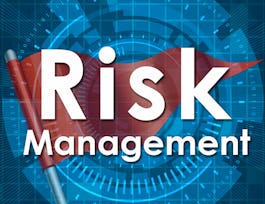In this course you will learn how companies decide on how much debt to take, and whether to raise capital from markets or from banks. You will also learn how to measure and manage credit risk and how to deal with financial distress. You will discuss the mechanics of dividends and share repurchases, and how to choose the best way to return cash to investors. You will also learn how to use derivatives and liquidity management to offset specific sources of financial risk, including currency risks. Finally, You will learn how companies finance merger and acquisition decisions, including leveraged buyouts, and how to incorporate large changes in leverage in standard valuation models.



Corporate Finance II: Financing Investments and Managing Risk
This course is part of Financial Management Specialization


Instructors: Heitor Almeida
Sponsored by EdgePoint Software
42,543 already enrolled
(846 reviews)
What you'll learn
Evaluate the benefits and costs of different types of debt such as bonds and bank debt.
Manage risks that cannot be hedged with derivatives using liquidity and other tools.
Use the NPV concept to identify situations of unfairness and injustice.
Identify potential conflicts between equity holders and debtholders in firms that are close to bankruptcy.
Skills you'll gain
Details to know

Add to your LinkedIn profile
14 assignments
See how employees at top companies are mastering in-demand skills

Build your subject-matter expertise
- Learn new concepts from industry experts
- Gain a foundational understanding of a subject or tool
- Develop job-relevant skills with hands-on projects
- Earn a shareable career certificate


Earn a career certificate
Add this credential to your LinkedIn profile, resume, or CV
Share it on social media and in your performance review

There are 6 modules in this course
You will become familiar with the course, your classmates, and our learning environment. The orientation will also help you obtain the technical skills required for the course.
What's included
4 videos5 readings1 assignment
In Module 1, we will discuss the differences between debt and equity financing for corporations. We will then learn how to avoid usual mistakes that people make when analyzing the choice between debt and equity. We will work with financial statements to understand the impact of higher debt on corporate profits, and we will learn how debt and risk are fundamentally related. Finally, we will use our knowledge to understand how companies choose how much debt to have.
What's included
11 videos2 readings3 assignments
In Module 2 we will dig deeper into the mechanics and the institutional details that are important to understand debt financing. We will learn models that allow us to link default probabilities to yields on a company’s debt. We will discuss the roles of credit ratings for debt markets and for companies. We will learn the importance of non-price contractual terms such as debt covenants, collateral, and seniority. We will use this knowledge to understand how companies choose between bank debt and bond financing. Finally, we will discuss how payout decisions (dividends and share repurchases) affect firm value and how companies choose their optimal payout policy.
What's included
10 videos2 readings4 assignments1 peer review
In Module 3 we will identify good and bad reasons why companies engage in risk management, or hedging. We will learn the mechanics of how to use derivatives such as forwards and futures to eliminate specific risks. We will also discuss how to manage risks that cannot be hedged with derivatives. In particular, we will learn that appropriate liquidity management can work as a substitute for hedging strategies. We will also discuss how and why to hedge currency risk, and how to think about a company’s cost of capital when making cross-border investments.
What's included
11 videos2 readings3 assignments
In Module 4, we will apply our knowledge on how to discount future cash flows to challenging situations. First, we learn how the presence of debt can result in acceptance of negative NPV projects (overinvestment, excessive risk taking). Then, we learn how debt can result in the rejection of positive NPV projects (underinvestment). Next, we will learn that NPV of the firm can differ from NPV for society, and how this may explain firms’ decisions to make bribe payments even though corruption is detrimental to welfare. Last, we examine situations where the NPV equation does not hold and what this means for society.
What's included
9 videos2 readings3 assignments1 peer review
You will find out where to go next after completing this course and be able to share any thoughts you have on this course experience.
What's included
1 video2 readings
Instructors


Offered by
Why people choose Coursera for their career




Learner reviews
846 reviews
- 5 stars
85.12%
- 4 stars
12.75%
- 3 stars
0.94%
- 2 stars
0.47%
- 1 star
0.70%
Showing 3 of 846
Reviewed on Nov 28, 2020
I have really enjoyed this course. I understad much better how my company works now. Corporate finance is an amazing world and this course and this teacher are great
Reviewed on Feb 21, 2018
Excellent conclusion from what I learned in the the first course, this makes it more interesting of course, but I would recommend to take both courses, Thanks Almeida
Reviewed on Dec 26, 2020
Great course, interesting subjects, and financial insight on strategy and tactics.
Recommended if you're interested in Business

The Hong Kong University of Science and Technology

IE Business School

University of Illinois Urbana-Champaign

Duke University

Open new doors with Coursera Plus
Unlimited access to 10,000+ world-class courses, hands-on projects, and job-ready certificate programs - all included in your subscription
Advance your career with an online degree
Earn a degree from world-class universities - 100% online
Join over 3,400 global companies that choose Coursera for Business
Upskill your employees to excel in the digital economy


